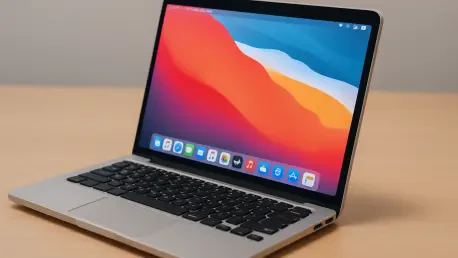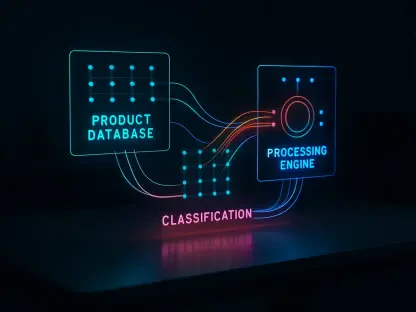Imagine a world where the sleek design and robust ecosystem of Apple’s MacBook are accessible to budget-conscious consumers, challenging the long-held belief that premium technology comes at a prohibitive cost. In today’s personal computing market, where price often dictates choice, rumors of Apple introducing a low-cost MacBook priced at just $599 have sparked intense curiosity. This review dives into the implications of such an innovation, exploring how it could redefine affordability and performance in the laptop segment. The analysis focuses on the evolving pricing dynamics between Apple Macs and Windows PCs, the speculated features of this budget device, and its potential to reshape market perceptions. By examining these aspects, this piece aims to uncover whether Apple can truly disrupt the entry-level market with a device that balances cost and capability.
Background of the Pricing Shift in Personal Computing
The personal computing landscape has long been defined by a stark contrast in pricing perceptions between Apple Macs and Windows PCs. Historically, Macs have been viewed as premium products with a higher upfront cost, while Windows-based systems were seen as the more affordable option for the masses. However, recent shifts have begun to blur these lines, as the total cost of owning a Windows PC often exceeds initial expectations due to recurring expenses like software subscriptions and mandatory upgrades.
A significant factor driving this change is the escalating cost associated with Windows ecosystems. Vendor price hikes, reported to range between 30% and 50% in recent industry analyses, alongside forced transitions to newer operating systems like Windows 11, have burdened consumers with unexpected hardware and software investments. These trends have eroded the once-clear price advantage of Windows PCs, making room for alternative players to challenge the status quo.
Apple’s strategic pivot toward affordability appears timely amidst these market dynamics. By leveraging in-house technologies and offering free OS updates, the company is positioning itself to compete beyond the premium segment. This rumored low-cost MacBook represents a bold step to capture a broader audience, potentially altering the narrative that Apple products are out of reach for budget-minded buyers.
Key Innovations of the Rumored Low-Cost MacBook
Budget-Friendly Price Point at $599
The rumored price tag of $599 for a new MacBook marks a groundbreaking move for Apple, a brand often synonymous with high-end pricing. This figure places the device in direct competition with entry-level Windows PCs, which typically dominate the budget market. Such aggressive pricing could significantly enhance accessibility, making Apple’s ecosystem available to students, small business owners, and casual users who previously found Macs financially unattainable.
Beyond mere affordability, this price point suggests a potential shift in market penetration strategies. By targeting cost-sensitive demographics, Apple could expand its user base, especially in regions where price remains a primary barrier to adoption. This move might also pressure competitors to rethink their pricing models, sparking a wave of innovation across the industry.
The implications of this strategy extend to consumer trust and brand perception. A $599 MacBook, if executed with reliable performance, could dismantle the stereotype of Apple as an elitist brand, fostering greater inclusivity. However, the challenge lies in delivering a product that maintains quality standards at this unprecedented price level.
Utilization of A-Series Mobile Processors
One of the most intriguing aspects of the speculated low-cost MacBook is its rumored use of A-series mobile processors, traditionally found in iPhones. These chips, known for their efficiency and power in smaller devices, represent a cost-saving approach through Apple’s in-house hardware design. This choice could enable the company to maintain profitability while offering a competitive price.
From a performance perspective, A-series processors are likely optimized for entry-level tasks such as web browsing, document editing, and media consumption. Their energy efficiency could also translate to impressive battery life, a key selling point for users seeking portable, long-lasting devices. Yet, questions remain about their ability to handle more demanding workloads compared to traditional laptop processors.
This innovative hardware decision reflects Apple’s broader strategy of integrating mobile technology into larger form factors. While this approach may limit the device’s appeal for power users, it aligns perfectly with the needs of a budget audience prioritizing cost and basic functionality. The success of this integration will hinge on seamless software optimization to ensure a smooth user experience.
Current Market Trends Driving Apple’s Strategy
The personal computing market is witnessing a notable upheaval, with Windows PC costs climbing due to vendor-driven price increases and mandatory system upgrades. Industry reports indicate that hardware inflation has pushed prices up significantly, while the transition to Windows 11 often requires new devices or costly updates. These factors have created a financial strain for both individual and enterprise buyers, diminishing the appeal of Windows systems as the default affordable choice.
Apple, on the other hand, benefits from distinct advantages that align with these market challenges. The use of Apple Silicon reduces dependency on third-party chip providers, cutting royalty costs and enabling more predictable pricing. Additionally, free OS updates and minimal fragmentation in the ecosystem offer a stark contrast to the recurring expenses tied to Windows platforms.
This environment sets the stage for a low-cost MacBook to make a substantial impact. With Windows PCs becoming less cost-effective over time, Apple’s focus on value through integrated hardware and software solutions positions it favorably. If the rumored device delivers on performance and security, it could capitalize on consumer frustration with rising Windows costs, carving out a significant share of the budget segment.
Potential Applications and Target Audiences
The speculated low-cost MacBook holds promise for a variety of real-world applications, particularly among demographics constrained by budget. Individual consumers seeking an affordable entry into Apple’s ecosystem stand to benefit, as the device could serve as a reliable tool for everyday tasks like online learning, personal productivity, and entertainment. Its potential affordability makes it an attractive option for first-time laptop buyers or those upgrading from outdated systems.
Enterprise IT buyers also emerge as a key target audience, especially in sectors prioritizing cost efficiency alongside security. Small to medium-sized businesses, often burdened by the hidden costs of Windows systems, might find this MacBook a viable alternative for bulk purchases. Its integration with Apple’s secure ecosystem could reduce long-term maintenance expenses, appealing to budget-conscious IT managers.
Educational institutions represent another critical use case, where funding limitations frequently dictate technology choices. A competitively priced MacBook could equip students and educators with access to high-quality tools without straining school budgets. If Apple tailors this device with educational software and support, it could become a staple in classrooms, further expanding its reach across diverse user groups.
Challenges and Limitations of a Budget MacBook
Despite the excitement surrounding a low-cost MacBook, several challenges loom on the horizon that Apple must navigate. One primary concern is the technical limitation of A-series mobile processors when tasked with demanding applications. While suitable for basic functions, these chips may struggle with resource-intensive software, potentially alienating users who expect versatility from their laptops.
Another hurdle lies in Apple’s pricing model for upgrades, particularly for memory and storage. Historically, the company has charged premium rates for such enhancements, which could undermine the affordability of the base model. If the cost of necessary upgrades pushes the total price beyond budget expectations, consumer skepticism about the device’s value proposition might grow.
Market perception poses an additional obstacle, as some buyers may doubt the performance capabilities of a sub-$600 MacBook. Overcoming this skepticism will require Apple to balance cost-cutting measures with robust quality assurance. Ongoing efforts to refine hardware and software integration will be crucial to ensure the device meets diverse user needs and sustains broad adoption.
Future Outlook for Apple in the Budget Segment
Looking ahead, Apple’s foray into the budget computing market signals potential for significant disruption in the entry-level segment. If the low-cost MacBook proves successful, it could pave the way for a broader lineup of affordable devices, challenging competitors to innovate similarly. This move might redefine Apple’s brand identity, positioning it as a versatile player across all price points.
Future innovations in cost-efficient hardware, such as further advancements in Apple Silicon tailored for budget devices, could enhance performance without inflating costs. Over the next few years, from 2025 to 2027, sustained investment in scalable chip designs might enable Apple to offer even more powerful yet affordable laptops. Such progress would solidify its foothold in a previously untapped market.
The long-term impact on consumer perceptions remains a critical consideration. A successful budget MacBook could shift the narrative around Apple’s accessibility, encouraging millions to consider switching from Windows ecosystems. As affordability aligns with quality, the company stands to reshape how value is defined in personal computing, potentially dominating both premium and entry-level spaces.
Final Assessment and Key Takeaways
Reflecting on the exploration of the rumored low-cost MacBook, it becomes evident that Apple has strategically positioned itself to challenge the entrenched pricing dynamics of the personal computing market. The analysis highlighted how escalating Windows PC costs, coupled with Apple’s innovative use of A-series processors and a competitive $599 price point, create a compelling case for affordability without sacrificing quality. The potential to cater to diverse audiences, from students to enterprise buyers, underscores the device’s broad applicability, despite challenges like processor limitations and upgrade costs.
Moving forward, Apple needs to prioritize seamless integration of hardware and software to address performance concerns and build consumer trust in this budget offering. A focused effort on educational partnerships and enterprise solutions could amplify the device’s impact, ensuring it meets the needs of cost-sensitive sectors. Additionally, transparent communication about the value of upgrades will be essential to maintain the perception of fairness in pricing. As the market evolves, close monitoring of competitor responses and consumer feedback promises to guide Apple in refining its approach, potentially setting a new standard for accessible technology.









